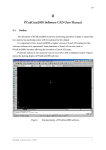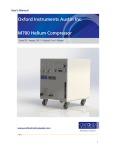Download The European Socio-economic Classification (ESeC) User Guide
Transcript
The European Socio-economic Classification (ESeC) User Guide Eric Harrison and David Rose Institute for Social and Economic Research University of Essex Colchester, UK September 2006 1 Contents 1. Introduction 3 2. Background, History, Origins and conceptual basis 3-6 3. Detailed category descriptions and operational issues 6-10 4. How to derive ESeC 10-17 5. Derivation materials 18 6. Household level ESeC 18 7. Understanding ISCO88 (COM) 18-20 8. The Effects of Incomplete Information on ESeC 20-21 Appendix 1: The Conceptual Derivation of ESeC 22 2 THE EUROPEAN SOCIO-ECONOMIC CLASSIFICATION (ESeC) USER GUIDE Eric Harrison and David Rose ISER, University of Essex 1. INTRODUCTION 1.1 The European Socio-economic Classification (ESeC) is an occupationally based classification but has rules to provide coverage of the whole adult population. The information required to create ESeC is: • • • • 2. occupation coded to the minor groups (i.e. 3-digit groups) of EU variant of the International Standard Classification of Occupations 1988 (ISCO88 (COM) details of employment status, i.e. whether an employer, self-employed or employee; number of employees at the workplace whether a worker is a supervisor. BACKGROUND, HISTORY, ORIGINS AND CONCEPTUAL BASIS Background: What is a ‘socio-economic classification’? 2.1 The term ‘socio-economic classification’ (SEC) is merely a descriptive one. That is, it has no theoretical or analytic status whatever and so may be applied as a generic term for a variety of different measures designed to reflect how societies are stratified. Social stratification refers to social inequalities that may be attributed to the way a society is organised, to its socio-economic structure. SECs all share in common the idea that in market economies it is market position, and especially position in the occupational division of labour, which is fundamental to the generation of social inequalities. The life chances of individuals and families are largely determined by their position in the market and occupation is taken to be its central indicator; that is the occupational structure is viewed as the backbone of the stratification system. 2.2 The question then becomes how we use occupation as an indicator of social position in terms of an SEC. Two broad approaches exist, reflecting different aspects of inequality. First there are occupational scales which tend to measure the distributive aspects of inequality and, second, there are categorial schemas intended to measure relational as well as distributive issues. 2.3 Thus, social scientists have tended to become divided between those who favour categorial approaches to socio-economic classification and those who prefer continuous measures. That is, some favour SECs that divide the population into a discrete number of categories or social positions. Others prefer measures that allow for an unlimited number of graded distinctions between occupational groups which assume that differences between occupational groups can be captured in one dimension’ represented by a single parameter. ESeC is a categorial schema. 3 History 2.4 A number of European countries have their own national socio-economic classifications which they use to illustrate the social patterns associated with a variety of life-chances such as health, education, deprivation, poverty and so on. However, there has not been an equivalent European classification which would allow researchers to compare the relationship between social organization and life chances cross-nationally. 2.5 In 1999, Eurostat, as part of its statistical harmonisation programme, established an expert group to advise on the possibility of creating a European SEC. ESeC is the culmination of this group’s work. Origins 2.6 ESeC has been developed from a sociological classification that has been widely used in pure and applied research, known as the Erikson-Goldthorpe-Portocarero (EGP) Schema. The decision to adopt the EGP classification as the basis for ESeC was made because it is widely used and accepted internationally, is conceptually clear, and has been reasonably validated both in criterion terms as a measure and in construct terms as a good predictor of health and educational outcomes. ESeC improves on the EGP Schema in terms of more thorough validation and better documentation for comparative purposes. Conceptual basis 2.7 ESeC aims to differentiate positions within labour markets and production units in terms of their typical 'employment relations'. Therefore, ESeC recognises four basic positions: employers, the self-employed (own account workers), employees and those involuntarily excluded from the labour market (see Appendix 1). 2.8 Among employees, there are quite diverse employment relations and conditions, that is employees occupy different labour market situations and work situations. Labour market situation equates to source of income, economic security and prospects of economic advancement. Work situation refers primarily to location in systems of authority and control at work, although degree of autonomy at work is a secondary aspect. The ESeC categories thus distinguish different positions (not persons) as defined by social relationships in the work place - i.e. by how employees are regulated by employers through employment contracts. Three forms of employment regulation are distinguished. 1. In a 'service relationship' the employee renders 'service' to the employer in return for 'compensation' in terms of both immediate rewards (e.g. salary) and long-term or prospective benefits (e.g. incremental pay scales, assurances of security and career opportunities). The service relationship typifies Class 1 and is present in a weaker form in Class 2 (see table 1). 2. In a 'labour contract' employees give discrete amounts of labour in return for a wage calculated on amount of work done or by time worked. Typically contracts are easily terminated and there are no prospective elements in the employment contract. The labour contract is typical for Class 9 and in weaker forms for Classes 7 and 8 (see table 1). 4 3. Intermediate or ‘mixed’ forms of employment regulation that combine aspects from both forms (1) and (2) are typical in Classes 3 and 6 (see table 1). Table 1: The European Socio-economic Classification ESeC Class Common Term Employment regulation 1 Large employers, higher grade professional, administrative and managerial occupations Higher salariat Service Relationship 2 Lower grade professional, administrative and managerial occupations and higher grade technician and supervisory occupations Lower salariat Service Relationship (modified) 3 Intermediate occupations Higher grade white collar workers Mixed 4 Small employer and self employed occupations (exc agriculture etc) Petit bourgeoisie or independents - 5 Self employed occupations (agriculture etc) Petit bourgeoisie or independents - 6 Lower supervisory and lower technician occupations Higher grade blue collar workers Mixed 7 Lower services, sales and clerical occupations Lower grade white collar workers Labour Contract (modified) 8 Lower technical occupations1 Skilled workers Labour Contract (modified) 9 Routine occupations1 Semi- and nonskilled workers Labour Contract Unemployed - 10 Never worked and long-term unemployed 1. If analysts wish to identify agricultural workers separately from others, classes 8 and 9 may be subdivided in to 8a, 8b, 9a and 9b. In each case sub-classes 8b and 9b would be for farm workers. ISCO minor groups 600 and 610-613 go to 8b. 614 and 615 could go here if analysts wished to include forestry and fishing workers in 8b. ISCO 920 and 921 form class 9b. Readers should note that in cases where we refer to minor groups ending with a zero (e.g. 600, 610, 920), this refers to the convention that this code is employed where it is not possible (either because of lack of information or because of the need to ensure respondent anonymity) to code occupation more precisely to a particular minor group. 5 2.9 The classification also separately identifies employers and the self-employed with no employees, with large employers in Class 1 and others in classes 4 or 5. Table 1 displays the classification in full. Appendix 1 provides a diagrammatic picture of the conceptual basis of ESeC. The version of the classification shown in table 1, which will be used for most analyses (the analytic version), has ten classes. For complete coverage, the three categories ‘Students’, ‘Occupations not stated or inadequately described’, and ‘Not classifiable for other reasons’ are added as 'Not classified'. 2.10 Since the schema is designed to capture qualitative differences in employment relationships, the classes are not consistently ordered according to some inherent hierarchical principle. However, so far as overall economic status is concerned, Classes 1 and 2 are advantaged over Classes 3, 6, 7, 8 and 9 in terms of greater long-term security of income, being less likely to be made redundant; less short-term fluctuation of income since they are not dependent on overtime pay, etc; and a better prospect of a rising income over the life course. 3. DETAILED CATEGORY DESCRIPTIONS AND OPERATIONAL ISSUES 3.1 The primary distinction in an employment relations approach is that between employers, who buy the labour of others and assume some degree of authority and control over them; self employed (or 'own account') workers who neither buy labour nor sell their labour to others; and employees, who sell their labour to employers. Employees are further differentiated according to the employment relations of their occupation, employers are separated by size of establishment and the self-employed according to occupation (see Appendix). Broadly speaking, the kind of contracts employees have depend upon (a) how easily their work may be monitored and controlled by the employer and (b) ‘asset specificity’, i.e. how specific and crucial their knowledge of technical and organizational issues is to the employer. When monitoring is difficult and asset specificity is high, a service relationship will be typical; labour contracts apply where labour is more easily replaceable in these terms. The following category descriptions name and define each class and discuss associated operational issues. Class 1: Large employers, higher grade professional, administrative and managerial occupations: ‘the higher salariat’ Large employers: large employers are allocated to Class 1 on the assumption that their businesses involve a similar degree and exercise of managerial authority to that of higher managers. In this sense, they are seen as different from small employers in Classes 4 and 5. A size rule of +/-10 employees is used to distinguish large from small employers. Higher grade professional occupations: These occupations are regulated through a service relationship. Examples of professional occupations which would be typical of Class 1 are ISCO Occupational Unit Groups (OUGs) 2421 lawyers, 2111-22 scientists, 2310 higher education teaching professionals and 2142-7 professional engineers. On the grounds that ‘a professional is a professional is a professional’, the selfemployed and small employer professionals are allocated to the same class as employees in their profession. That is, we regard professional status as paramount. Professional self-employment is different in nature from non-professional selfemployment. Professionals who are self-employed generally have more control over 6 their market situations than non-professionals. They also share more in common with employed professionals than with self-employed non-professionals. Higher grade administrative and managerial occupations: again regulated via a service relationship, the most typical occupations in this part of Class 1 are Chief Executive Officers and the most senior levels of the civil service or state bureaucracies. Company directors and chief executives are identified by ISCO 1210, higher level government officials by 1110. For other managerial OUGs it is much more difficult operationally to distinguish higher from lower grade managerial and administrative occupations. However, minor group 123 is more likely to have a preponderance of higher grade managers, e.g. 1231 finance managers. Class 2: Lower grade professional, administrative and managerial occupations: higher grade technician and supervisory occupations: ‘the lower salariat’ In the case of lower professionals, skills are more readily transferable and less organizationally specific. Hence they do not have the full service relationship but a modified form of it. Most health, welfare and educational professionals (e.g. 2320-40 teachers, 2446 social workers, 2230 nurses, 2229 medical ancillaries) are thus allocated to Class 2, as are 3143 aircraft pilots and 2451 journalists for other examples. For administrators and managers (and also higher grade supervisors) asset specificity is likely to be high in the sense that people in such occupations use a lot of organisation specific knowledge. Here the modified service relationship derives from the fact that work is more routinely monitored. Of course, people working in these occupations will often have career ladders that, if successful, would take them to more senior positions in Class 1. OUGs 1221-26, production and operations managers, seem to be good examples. All managers in small (<10 employees) organisations are also in Class 2. Higher grade technicians are more similar to lower grade managers etc. That is, it is the degree of asset specificity rather than difficulty of monitoring which is paramount and leads to a modified service relationship. Examples would be 3111-7 computing technicians, physical and engineering science technicians and civil engineering technicians. Class 3: Intermediate occupations: ‘higher grade white collar workers’ This class has some elements of the service relationship, although overall the form of employment relationship is mixed. The problem here for the employer is not asset specificity but monitoring. Positions in this class exist on the borders of bureaucratic structures and share similar conditions to managers and administrators in terms of salaries, incremental scales and autonomy with regard to time. Typical occupations here include most clerical occupations and administrative assistants, occupations which involve working alongside managers and professionals in ancillary roles, e.g. 3439 administrative associate professionals, 3443 government social benefits officials and 4190 office clerks. There is no career structure comparable to that found in Classes 1 and 2 (other than, perhaps, into supervisory or very junior managerial Class 2 positions). Often these positions involve employees in adhering to and carrying though bureaucratically defined rules with little in the way of discretion but some emphasis on efficiency. 7 Classes 4 and 5: Small employers and self-employed in non-professional occupations: ‘petit-bourgeoisie or independents’ These form two of the basic positions in the class schema. Employers buy labour and so have some authority and control over employees. The self-employed neither buy nor sell labour. Small employers are distinguished from large employers by the size rule +/- 10 employees. Professional and higher technician small employers and self-employed go to the same class as employees in the same occupation (classes 1 or 2). Hence Class 4 refers to non-professional occupations, i.e. self-employed and own account workers. Class 5 refers to farmers, etc. Class 6: Lower supervisory and lower technician occupations: ‘higher grade blue collar workers’ This class, like Class 3, has a mixed form of employment regulation, but in distinction from Class 3, Class 6 has mixed regulation because of problems employers have with asset specificity - that is, employees in Class 6 possess an important element of organization specific skills, that is knowledge of organizational needs. For this reason, some element of an internal firm labour market operates for these occupations. Lower supervisors are found in occupations which, for employees, would place them in Classes 7, 8 or 9. Again they have a certain degree of asset specificity. Lower technicians have greater organization specific skills than other ‘blue collar’ employers. Typical occupations are 3118 draughtspersons, 7244 telegraph and telephone line installers, 7311 precision instrument makers and 7242 electronics fitters. Class 7: Lower services, sales and clerical occupations: ‘lower grade white collar workers’ This class is regulated via a modified labour contract. The precise reasons for this situation are unclear since there appear to be no real monitoring problems for occupations in this class, nor any great issues of asset specificity. It is possible that the expansion and high degree of part-time employment in many occupations in this class has led to a worsening of overall employment contracts compared with Class 3 where many of these occupations might once have been placed (e.g. retail assistants). Equally, there may be some positive employment relations’ effects of working in large organisations in the public and private sectors. Typical occupations are 5220 shop workers (retail assistants) and 5131-9 care workers. Class 8: Lower technical occupations: ‘skilled workers’ A modified labour contract is also typical for occupations in Class 8. Here the employer has some monitoring problems with employees in terms of work quality. 8 There might also be a need to induce employees to invest in developing skills that are important to the employer. Those working in ‘skilled’ or lower technical occupations may also have organization specific skills or skills in short supply in the labour market. For all these reasons, some modifications to the basic labour contract may be required, such as a weekly wage, overtime pay, greater security of employment and so on. Typical occupations in Class 8 would be 7222 tool-makers, 7231-2 fitters, 7136 plumbers and 8311 locomotive drivers. Class 9: Routine occupations: ‘semi- and unskilled workers’ In this class, a basic labour contract prevails since there are no real issues relating to either monitoring or asset specificity. Work is paid for by either the piece or by time (hourly paid). Both the quality and quantity of work are easily monitored and employees are easily replaced without serious loss of productive value. Typical occupations here include 9131 cleaners, 9313-30 labourers, 8321-4 drivers of motor vehicles, 8281-6 assemblers, 8271-9 machine operators, 9151 porters and messengers. Class 10: Never worked and long-term unemployed: ‘unemployed’ This class is defined in terms of its exclusion from employment relations. Members of this class seek work but have not been employed either ever or for a considerable period of time, say 6 months or more. If analysts do not wish to implement this class, then the never worked are excluded and the long-term unemployed are re-classified to last main paid job, as explained below. The non-employed 3.2 In order to improve population coverage, ESeC treats those who are not currently in paid employment by allocating them via their last main paid job. Thus, for most non-employed persons (the unemployed, the retired, those looking after a home, those on government employment or training schemes, the sick and disabled etc), the normal procedure is to classify them according to their last main job. The main exception to this rule is for full-time students who are excluded from ESeC and the never worked/long-term unemployed (see above). Long-term unemployed are those who have been out of work for six months or more. The never worked are those who are seeking work but have never had any paid employment. Six, five and three class models 3.3 The 10 class model may be collapsed to 6, 5 or 3 classes. In the six class model, classes 1 and 2 are combined to form class 1 ‘the salariat’; classes 3 and 6 combine into an ‘intermediate employee’ class 2; classes 4 and 5 become a single class 3 of ‘small employers and self-employed’; class 7 becomes class 4; class 8 becomes class 5; class 9 becomes class 6. 3.4 To make the 5 class model, classes 5 and 6 in the six class model are combined into a single class of ‘lower technical and routine occupations’. 3.5 In relation to the ten class model, the three class model combines classes 1 and 2=salariat; 3, 4, 5 and 6=intermediate; 7, 8 and 9=working class. Class 10 may be 9 added as an additional in any of the models, if desired. However, note that Class 10 is NOT a dump code for cases which cannot otherwise be classified. 3.6 When datasets have certain information missing, analysts may want to consider collapsing ESeC into five or three class versions. The implications of doing this are examined in more detail in appendix 2. 4. HOW TO DERIVE ESeC 4.1 To create ESeC, data on occupation and employment status are required. An ESeC category is allocated by using a combination of: • • Information about occupation coded to minor group level of ISCO88 (COM) Information about employment status and size of organisation in the form of an employment status variable 4.2 The derived employment status variable is created by combining data on whether an individual is an employer, self-employed or an employee, size of organisation (where collected) and (other than for managers and professionals in ISCO major groups 1 and 2) supervisory status. 4.3 Although it is expected that the vast majority of users will use the syntax provided with this guide in order to derive ESeC, we also provide the ESeC derivation table on which the syntax is based. In what follows, we explain how ESeC has been derived for this table so that users are fully aware of the basis of the syntax. In each cell of the table is the class value, i.e. the typical employment relations for that combination of occupational group by employment status. Employer, self-employed or employee 4.4 ESeC needs to distinguish employers; the self-employed who work on their own account with no employees; and employees who are employed by an individual or organisation. Size of organisation 4.5 For size of organisation, ESeC uses information on the number of employees in the 'workplace' in order to distinguish between employers in large and small establishments and, for some occupations, between higher and lower managers. The distinction between large and small employers is achieved by applying a size rule cut-off of 10 employees. Individual employers in organisations with 10 or more employees are deemed to own 'large' organisations; those owning enterprises below this threshold are classified as 'small' employers. Supervisory status 4.6 Supervisors are employees who are neither managers nor professionals but who are responsible as their main job task for supervising the work of other employees. Many datasets do not have information about supervision and this has caused problems in deriving ESeC. The EU LFS has recently added a supervision question similar to that discussed below. 10 4.7 If a supervision variable cannot be derived, the employee value for ESeC has to suffice, i.e. class 3, 6, 7, 8 or 9 as appropriate to the ISCO minor group. Some datasets have a supervision question which includes the number of people supervised. In such cases we recommend that someone should be supervising at least three people in order to be regarded as a supervisor. Managers 4.8 In ISCO88 managers are coded to major group 1 only. Thus, only respondents coded to these groups may be managers in either class 1 or 2 of ESeC. Respondents coded to other major groups may not be regarded as managers in ESeC, even if they say they have managerial duties. Blank cells 4.9 There are some cells that would be blank or empty in the derivation table. These cells correspond to situations deemed not to arise, such as a self-employed police officer. In practice some responses to surveys and censuses may correspond to blank cells (e.g. as a result of coding error). In such cases we have filled the cell using the value of the basic class for a minor group, the so-called ‘simplified class’ (see below). Derivation methods 4.10 There are two methods to derive ESeC. The choice of method depends on the information available about employment status. Method Information required Full ISCO minor group, employment status, size of organisation Simplified ISCO minor group only 4.11 The Simplified method provides a last resort solution when only occupational data coded to ISCO88 are available. 4.12 The Full Method achieves the best quality derivation by using all three items of information, as shown in this diagram. 11 FIGURE 1: POSSIBLE EMPLOYMENT STATUSES IN THE FULL METHOD DERIVATION For all: Categorised as • Employer • Own account/self-employed without employees • Employee For employers: • With 10+ employees • With <10 employees For employees: (Categorised as) • Supervisor • Other employee Questions to ask 4.13 The following are the questions ideally required to create ESeC. They should correspond to what is required for the purposes of the EU LFS and other harmonised European surveys. However, not all these questions may appear on other surveys. It is partly for this reason that we have designed ESeC so that it may be created using either the full or simplified methods. 4.14 The instructions for interviewers are shown in italics. Two series of questions are needed in order to derive ESeC using the full method: three questions on occupation, and five questions on employment status/size of organisation. Occupation 4.15 Questions 1 to 3 collect information for coding to national classifications or to ISCO. They are asked about current job for those in paid work or about last main job for those who have ever had paid work, with the exception of full time students. Question 1 - Industry description "What did the firm/organisation you worked for mainly make or do (at the place where you worked)?" (Open) DESCRIBE FULLY - PROBE MANUFACTURING or PROCESSING or DISTRIBUTING ETC. AND MAIN GOODS PRODUCED, MATERIALS USED, WHOLESALE or RETAIL ETC." Question 2 - Occupation title current or last main job "What was your (main) job?" (Open) Question 3 - Occupation description current or last main job "What did you mainly do in your job?" (Open) 12 CHECK SPECIAL QUALIFICATIONS/TRAINING NEEDED TO DO THE JOB Employment status/size of organisation Questions 4 to 8 collect information for deriving the employment status/size of organisation variable. The interviewer asks questions 5 and 6 when the respondent answers 'Employee' to question 4. The interviewer asks questions 7 when the respondent answers 'Self-employed' to question 4, and 8 when the respondent answers 'With employees' to question 7. Question 4 - Employee or self-employed "Were you working as an employee or were you self-employed?" 1. Employee Go to question 5 2. Self-employed Go to question 7 The division between employees and self-employed is based on RESPONDENTS' OWN ASSESSMENT of their employment status in their main job. Question 5 - Supervisory status "In your job, did you have any formal responsibility for supervising the work of other employees?" 1. Yes Go to question 6 2. No Go to question 6 Include people who say they are managers DO NOT INCLUDE: - supervisors of children, e.g. teachers, nannies, childminders; - supervisors of animals; - people who supervise security or buildings only, e.g. caretakers, security guards Question 6 - Number of employees (Employees) "How many people worked for your employer at the place where you worked?” This should be coded to 1-9; 10+. If categories are 1-10; 11+, then code to this. If 1-4; 5-19, code to 1-19, 20+. We are interested in the size of the 'local unit of the establishment' at which the respondent works in terms of total number of employees. The 'local unit' is considered to be the geographical location where the job is mainly carried out. Normally this will consist of a single building, part of a building, or at the largest a selfcontained group of buildings. It is the total number of employees at the respondent's workplace that we are interested in, not just the number employed within the particular section or department in which he/she works. Question 7 - Self-employed working on own or with employees "Were you working on your own or did you have employees?" 1. On own/with partner(s) but no employees 2. With employees Go to question 8 13 Question 8 – Self-employed working on own or with employees "How many people did you employ at the place where you worked?” Were there ... (RUNNING PROMPT)... 0, 1-9, 10+. For other size bands, see question 6 above. Steps to derive the ESeC using the Full method 4.16 There are four steps to derive the ESeC. Step 1 Code occupation to the ISCO minor group. Follow procedures where the answers to questions on Step 2 employment status and size of organisation are missing. Step 3 Derive the employment status/size of organisation variable. With both minor group code and employment Step 4 status/size of organisation code, use the Full Derivation table to assign a category of the ESeC. Step 1: Coding to ISCO 4.17 This is generally achieved via a crosswalk from a national occupational classification to ISCO88 (COM). More information about ISCO is available in Appendix 2. Step 2: Procedures where answers to questions 4 to 8 are missing 4.18 The answers to the questions 4, 5 and 6 or 4, 7 and 8 are combined to produce the employment status/size of organisation variable. Where the questions have not been answered, take the following actions. Question Action not answered 4 Do not assume an answer, go straight to Step 2 of the procedure for using Simplified ESeC (see below) 6 or 8 Assume size 1 to 9. 5 If the ISCO code starts with 1 or 2, no answer is required. If the ISCO code does not start with 1 or 2, assume code 2, No. 7 Assume code 1, no employees. 14 Step 3: Derive the employment status/size of organisation variable 4.19 The employment status/size of organisation variable has these codes: Employment status/size of organisation Code Label 1 Employers - large organisations 2 Employers - small organisations 3 Self-employed, no employees 4 Supervisors 5 Other employees 4.20 Use the answers, or assumed answers to questions on employment status and size of organisation and the ISCO code to derive the five employment status codes. If supervisory status cannot be established for employees, code as employee. 4.21 A standard flow chart view of the process is available below; codes refer to the employment status/size variable. Step 4: Derive the ESeC category 4.22 The matrix version of the Full Method ESeC Derivation table contains a row for each ISCO minor group, columns for the five employment status/size of organisation codes and columns for Simplified ESeC and its associated employment status. The value of simplified ESeC has been calculated using European Social Survey (ESS) data for all countries. It is the modal value for each ISCO minor group in terms of employment status. 4.23 It would be better to use modal values for each country based on LFS data. NSIs may wish to calculate this value instead of the ESS one. 4.24 Use the ISCO group code to find the appropriate row and work across the row to reach the column for the employment status/size of organisation code. The cell where the row and column intersect will contain a category of the ESeC. 4.25 All managerial jobs are in ISCO major group 1; those minor group codes starting with 1. The cells in the supervisors' column for minor groups in major group 1 and 2 would be illicit (i.e. a manager is a manager is a manager; a professional is a professional is a professional), but have been assigned the simplified class value. 4.26 The derivation table contains no empty cells and the Simplified Class values have been used to fill such cells. 15 FIGURE 2: DERIVING THE EMPLOYMENT STATUS/SIZE OF ORGANISATION VARIABLE START SELFEMPLOYED? YES NO EMPLOYS OTHERS? YES UNDER 10 EMPLOYEES? NO/DK NO YES /DK EMPLOYERS, LARGE ORGANISATIONS CODE 1 EMPLOYERS, SMALL ORGANISATIONS CODE 2 SELFEMPLOYED, NO EMPLOYEES CODE 3 SUPERVISOR? YES NO/DK 16 SUPERVISORS CODE 4 OTHER EMPLOYEES CODE 5 Example case for the full derivation Case #F1 Question No. Question Respondent's answers Question 1 Industry Goods warehousing Question 2 Occupation title Stores manager Question 3 Occupation description In charge of stores Question 4 Employee/selfemployed 2 (small employer) Question 5 Supervisory status [Not answered] (Not needed) Question 6 Number of employees 1 (1 to 9) Resulting codes ISCO minor group code 131 Employment status/size of organisation 2 ESeC category 4 Steps to derive the ESeC using the Simplified method 4.27 There are two steps to derive the ESeC by the Simplified method. Step 1 Code occupation to the ISCO minor group. With the ISCO code, use the Full Derivation table to Step 2 assign a category of the ESeC from the simplified class column. Step 1 Coding to ISCO88 (COM) 4.28 Again, this is achieved via a national crosswalk. Step 2 Derive the ESeC category 4.29 In the matrix for the Full Method there is a column or row for Simplified ESeC (‘esssc’) Use the ISCO minor group code and the appropriate column or row for 'ess sc' to find the ESeC category. 17 5. DERIVATION MATERIAL 5.1 The derivation table is provided as an Excel spreadsheet, and there are syntax files for use in SPSS. Derivation Material for the Full Method • • Matrix format (Euroesec matrix.xls) SPSS syntax (Euroesec Full.sps) Derivation Material for the Simplified Method • • • Use the matrix for the Full Method and look in the column or row for 'ess sc'. A short version of the SPSS syntax file can be used (Euroesec Simple.sps). These files are available from www.iser.essex.ac.uk/esec/consort/matrices/. 6. HOUSEHOLD LEVEL ESeC 6.1 Traditionally the unit of analysis or class composition has been the family/household rather than the individual. That is, the nuclear family is seen as the basic structural element because of the inter-dependence and shared conditions of family members. A family member's own position may have less relevance to his/her life chances than those of another family member. A practical solution to this problem has been to select one family or household member as a reference person and take that person's position to stand for the whole household. 6.2 Essentially, assigning an ESeC category to a household involves deciding which household member best defines that household's position. This person is termed the household reference person (HRP). 6.3 In the past the reference person was defined as the Head of Household - the eldest householder, with males taking precedence over females in the case of couples or non-related joint householders. However, a preferable definition of the Household Reference Person would be: the person responsible for owning or renting or who is otherwise responsible for the accommodation. In the case of joint householders, the person with the highest income takes precedence and becomes the HRP. Where incomes are equal, the older is taken as the HRP. This procedure increases the likelihood both that a female will be the HRP and that the HRP better characterises the household's social position. Of course, NSIs must use whatever rule prevails in their organization for defining the HRP. Other users will be forced to use whatever rule prevails on the dataset in use. 7. UNDERSTANDING ISCO88 (COM) 7.1 ISCO88 (COM) is the European Union variant of the International Standard Classification of Occupations. It is a harmonised variable that is included in the main comparative datasets covering the European Research Area: the Labour Force Survey, the European Social Survey and EU-SILC. 7.2 Individual countries code to their own national classifications. In the majority of cases, these are based very closely on ISCO. In a number of other cases, for instance Great 18 Britain, Ireland, France and Germany, there is a more distinct national classification that can be ‘mapped’ directly onto ISCO through a conversion table or ‘crosswalk’. 7.3 ISCO organises occupations into a hierarchical framework. At the lowest level is the unit of classification – a job – which is defined as a set of tasks or duties designed to be executed by one person. Jobs are then grouped into occupations according to the degree of similarity in their constituent tasks and duties (Elias and Birch 1994). 7.4 ISCO has four nested tiers reflected in the numbering of the occupational codes: • Major groups – top-level, broad definitions of occupation, providing the first digit of the ISCO code Sub-major groups – second-level definition of occupation, providing first two digits Minor groups – third-level definition, providing the first three digits Unit groups – lowest, most detailed definition of occupation, providing the complete four-figure ISCO code • • • Table 2: Hierarchical Structure of ISCO88 (COM) Major group 2 Sub-major group Minor group Unit group 22 222 2222 Group title Professionals Life science and health professionals Health professionals (except nursing) Dentists 7.5 A comprehensive guide to ISCO88 (COM) http://www2.warwick.ac.uk/fac/soc/ier/research/isco88/ 7.6 Datasets usually contain ISCO coded to fewer than four digits. This can happen for a number of reasons: respondents may supply insufficient information; codes may be aggregated to comply with rules on confidentiality; crosswalks may not allow such precise coding. ESeC can be created using ISCO based on either three or two digits. 7.7 For example an interviewer may simply know that the person in question is a ‘corporate manager’ (sub major group 12). Where information is aggregated in this way there can be a problem if the minor groups within group 12 have different class positions. In this case the modal class for ISCO 12 employees is used. The SPSS syntax deals with these instances automatically, based on frequency distributions from pooled aggregate data in rounds 1 and 2 of the European Social Survey (see Appendix 8). If analysts are comparing only a small group of countries, or doing a single nation study, they might be advised to calculate modal values for each country. 7.8 In the process described above, some minor groups in ISCO will move between ESeC classes depending upon their numerical significance within a larger aggregate group. This in turn will lead to different distributions for the ESeC schema. A full list of distributions for ESeC based on differing levels of information is shown in Appendix 2. 7.9 In addition to the overall ‘shape’ of the ESeC distribution, analysts will be interested in two pieces of information: firstly the overall ‘level of agreement’ between derivations, that is to say the number of cases that stay in the same class; secondly the proportion of cases that move between each individual class and the others. Mutual 19 is available from exchange between any two classes will cancel each other out and so may not be apparent when comparing distributions. 7.10 The overall agreement between ESeC based on three digit and two digit ISCO is 86%. The correspondences between classes are shown below. Short range moves between adjacent classes are unlikely to cause problems for analysts; of more concern will be exchanges of cases between classes with different employment contracts, for instance 2 and 6 or 3 and 7. Table 3: Correspondence between 3 digit and 2 digit (‘full’ versions) ESeC From 3 digit ISCO 1 2 3 4 5 6 7 8 9 1 91.2 2 8.8 72.1 3 ESeC from 2 digit ISCO 4 5 6 7 8 9 99.9 0.8 99.0 0.2 100 13.9 86.1 21.9 77.2 93.5 3.1 11.9 0.9 2.7 85.0 8. THE EFFECTS OF INCOMPLETE INFORMATION ON ESEC 8.1 In addition to the full and simplified methods, users may find that they are missing just one piece of information, the most likely being establishment size or supervision. Here are three illustrations of the effects on the measure of ESeC produced. 8.2 In a situation where there is three digit ISCO but no information about establishment size, the overall agreement is 99.4%. The only groups affected are the self-employed and employers within the dataset. 8.3 In a situation where there is three digit ISCO but no information about supervisory responsibility, the overall agreement is 88%. While most datasets identify large numbers of ‘supervisors’, many of these in groups 1, 2 and 3 of ISCO will remain in the same class by virtue of their status as managers, professionals or associate professionals. The only classes affected are class 2 containing higher supervisors and class 6 containing lower supervisors. The effect is to reduce class 6 to a ‘rump’ with the cases being shared fairly evenly between the bottom three classes 20 Table 4: Correspondence between full version and one without supervision information (3 digit ISCO) ESeC From 3 digit ISCO 1 2 3 4 5 6 7 8 9 1 100 ESeC 3 digit without information on supervision 2 3 4 5 6 7 81.7 17.2 100 8 9 34.3 29.8 1.1 100 100 6.8 29.1 100 100 100 8.4 In a situation where ISCO is the sole information available, users produce the ‘simplified’ ESeC by allocating cases to a class based on the modal employment status for that occupation. This is in the majority of instances that for employees. A complete list of modal employment statuses for ISCO minor groups is shown at Appendix 9. 8.5 The overall agreement between a full 3 digit ESeC and a simplified 3 digit ESeC is 79.7%. The effects of the absence of supervisory information are compounded by the absence of employment status. The main outcome is the redistribution of a large proportion of cases into the appropriate classes for employees performing the same type of work. The detailed correspondences are shown below. Table 5: Correspondence between Full and simplified ESeC (3 digit ISCO) ESeC from 3 digit ISCO 1 2 3 4 5 6 7 8 9 1 94.7 2.4 2 2.3 73.2 1.2 Simplified ESeC (3 digits) 3 4 5 6 0.4 1.2 0.1 19.8 6.0 1.1 99.9 7.5 30.4 1.5 92.3 2.4 6.8 0.9 10.9 7 0.3 0.1 19.8 29.1 99.1 8 0.5 9 0.4 23.6 1.8 31.9 13.6 5.9 29.8 89.1 100 21 The conceptual derivation of ESeC Basic SEC Positions EMPLOYERS Large SELFSELF-EMPLOYED WORKERS Small EMPLOYEES EXCLUDED Form of employment regulation SERVICE RELATIONSHIP LABOUR CONTRACT SuperClerical Sales Services Super- ServServvisory/ ices visory/ Technician Professional managerial, etc Higher MIXED Lower routine Never UnempUnemptechnical worked loyed Lower Higher Lower Other Higher Lower Agric Other Higher Lower Agric Other Prof Man Prof Man Sup prof prof/ prof prof/ etc prof prof/ etc /Tech Tech Tech Tech 1 1 1 1 2 5 4 1 2 5 4 1 1 2 2 2 22 3 3 3 6 7 8 9 10 10























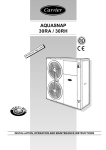
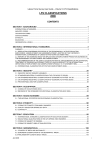

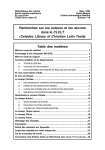



![[S30830T-CPE] Users Manual: CPE83SUE](http://vs1.manualzilla.com/store/data/005890174_1-2a1526c3cbd1c0db150881a0418c3ddc-150x150.png)
